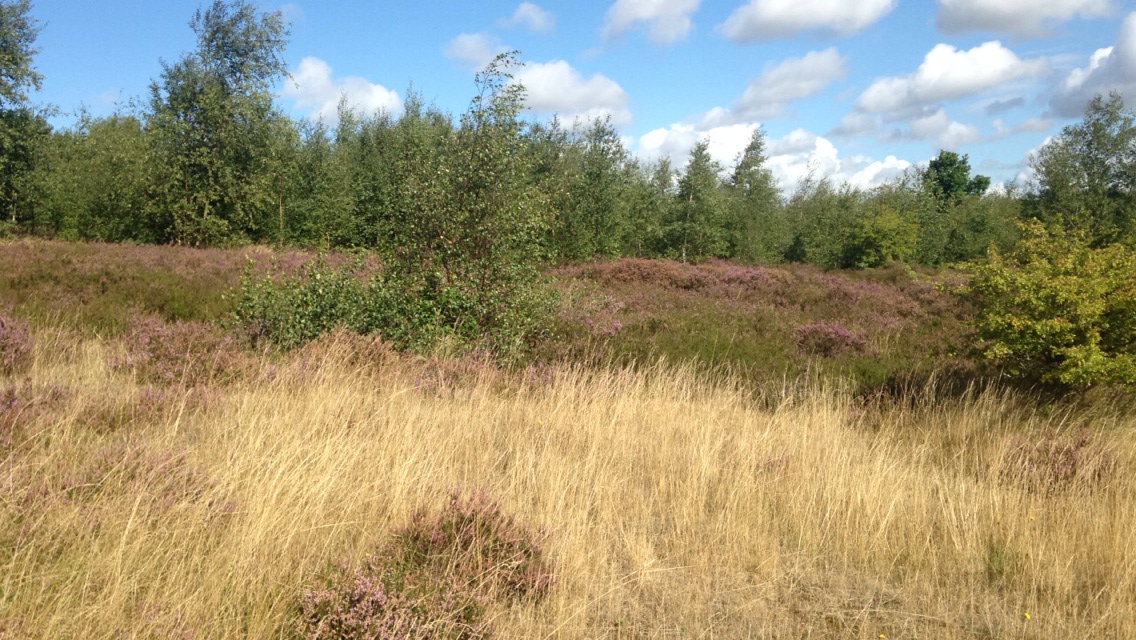This has led to a large area of land, not suitable for development that is part of the Dearne Valley’s growing natural resource. Many of these sites are now public resources, at the heart of the community and are actively used by a range of people.
Due the various approaches taken with the reclamation of colliery sites (some of it man made, some of it through nature) it has resulted in a wide and often unexpected range of species being found. These sites are commonly referred to as ‘Brownfield Sites’ or ‘Wasteland’ and are often overlooked, yet hold some of the rarest and most diverse wildlife in the UK, most notably invertebrates. Brownfield sites can have as many rare invertebrate species as ancient woodlands, and many act as important ‘reservoirs’ of wildlife.
 (Littleworth Park the former site of Monk Bretton Colliery, Barnsley)
(Littleworth Park the former site of Monk Bretton Colliery, Barnsley)
What’s so diverse?
‘On the most wildlife-rich brownfield sites, cycles of disturbance and abandonment combined with low nutrient soils, both give rise to a wide variety of habitats, patterns of water temporarily ebbing and flowing and a mini-ark of plant species. Many invertebrates have complex life-cycles, needing different things at different stages, so they often require two or more habitats close to each other – a ‘mosaic’ of habitats rather than miles and miles of the same (Buglife, 2017).’
 (Hoverflies are just one prime example of an understudied invertebrate group)
(Hoverflies are just one prime example of an understudied invertebrate group)
Surveying the Dearne
‘Surveying the Dearne’ will help capture the sheer range and variety but also understand why they are there as a result of the various land reclamation methods. This mosaic of sites is considered to be very rare in the country and increasingly uncommon in South Yorkshire.
The DVLP will work closely with the existing community, natural history groups, volunteers and partners to help build up a baseline of data about such sites in the Dearne. Uncovering what wildlife and habitats exist on site today and what is rare and important, ultimately leading to a greater ecological understanding of each sites significance to local biodiversity. This will be done via community training workshops in ecological survey and identification, habitat monitoring and mapping, and creating management recommendations for landowners where appropriate. To conserve and protect such vital habitats, as well as raising the profile and awareness of such important mosaics in our rapidly declining landscape.
Progress to Date
Roseanna from the DVLP team has a keen interest and passion in promoting citizenship science, with a particular focus on post industrial sites. To date she has carried out 24 initial desktop assessment’s on ex-colliery sites within the DVLP project area, utilising existing data and resource:
These include:
- Phase 1 habitat surveys
- Mining maps and records from South Yorkshire Mining Advisory Service (SYMAS)
- Ecological data searches
- Volunteer survey events
- Specialist recording days in the field
- Ecological training workshops in survey and identification
This is part of an on-going programme to train the next generation of naturalists, obtain greater biological records, raise awareness and help to protect and enhance species and habitats for future generations by leading to more sympathetic management and greater education and awareness of the value of brownfield sites.
Key partners to date include:
- Sorby Natural History Society (SNHS) , most notably Sorby Invertebrate Group (SIG)
- OPAL, using the Brownfield Survey Community Survey
Surveys and training days vary in a wide range of species groups, including botanical surveys, small mammals, Open Mosaic habitat on previously developed land (OMH) and most notably invertebrate survey and identification. Invertebrates have made a large component of the survey project due to the lack of ecological records in the area, understanding and confidence in identification. Because of this reason invertebrates are often overlooked and under recorded as they require more specialist examination and identification, usually outside of the field. However, invertebrates are incredibly important bio-indicators of the state and help of our natural environment.
 (Volunteers undertaking the OPAL Brownfield Survey on site with the Forestry Commission at New Park Springs, Grimethorpe, 2015)
(Volunteers undertaking the OPAL Brownfield Survey on site with the Forestry Commission at New Park Springs, Grimethorpe, 2015)

(Roseanna from the DVLP team showing volunteers how to undertake butterfly surveys, 2016)
To date we have been fortunate to carry out surveys and identification workshops in the following specialist invertebrate groups:
- Weevils
- Butterflies
- Snails & Slugs (Molluscs)
- Harvestman
- Hoverflies
- Bumblebees
- Shield & Plant bugs
- Hoppers (Leaf & Frog)
- Aquatic Invertebrates
- Brownfield Invertebrates (general)
(Below-participants at our recent Hoverfly training workshop with SIG)

These are just a flavour of some of our specialist invertebrate surveys and workshops, where we bring specialist tutors from SIG together with members of the local community, and volunteers with an interest to learn more. The survey & training programme is on-going throughout the DVLP project lifetime, keep a look out on our online diary HERE. All workshops are FREE of charge and cover other aspects of natural history.
We have also ran a very successful Reptile survey and identification project with European reptile expert John Newton and volunteers, obtaining 200+ new biological records, predominantly on brownfield sites. For more info please visit our reptile page HERE.
(John Newton with a rescued grass snake at Cudworth, 2016)

You can follow the page links above for a site overview of ex-colliery sites currently been assessed by the DVLP. The pages will continued to be updated as more data becomes available. If you have any information please contact us at [email protected]

